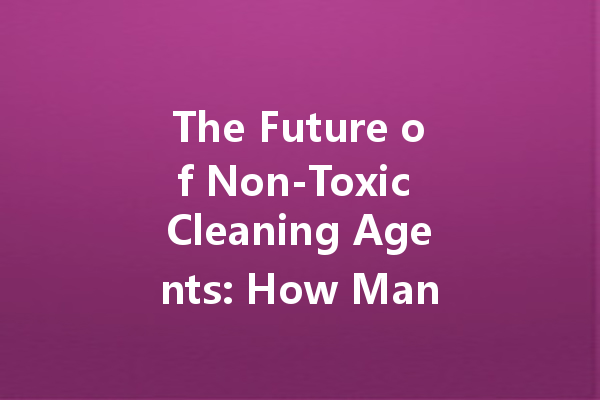Introduction
As awareness of environmental issues and health risks associated with traditional cleaning products increases, the demand for non-toxic cleaning agents is on the rise. Consumers are becoming increasingly conscious of what they use in their homes and workplaces, seeking products that are not only effective but also safe for their families and the environment. This article explores how manufacturers are evolving to meet the growing demand for non-toxic cleaning solutions.
Understanding Non-Toxic Cleaning Agents
What Are Non-Toxic Cleaning Agents?
Non-toxic cleaning agents are products formulated without harmful chemicals that could pose health risks to humans, animals, or the environment. These products often rely on natural ingredients, biodegradable components, and plant-based surfactants to provide cleaning power without the side effects associated with conventional products.
The Shift Toward Safety
The shift towards non-toxic cleaning agents is part of a broader trend in consumer behavior. People are becoming more informed about the harmful effects of certain chemicals—such as ammonia, chlorine, and phthalates—commonly found in cleaning products. This awareness has led to a rising demand for safer alternatives, prompting manufacturers to reformulate their products.
Innovations in Non-Toxic Cleaning Products
Utilizing Cutting-Edge Ingredients
To meet consumer expectations, manufacturers are experimenting with innovative, non-toxic ingredients. One such trend is the use of enzymes and plant-derived surfactants that break down dirt and grime effectively without harsh chemical interactions. Ingredients like baking soda, vinegar, and essential oils are also becoming more common, providing natural cleaning solutions that are both safe and effective.
Adopting Green Chemistry Principles
Green chemistry focuses on designing chemical products and processes that reduce or eliminate the use and generation of hazardous substances. Many manufacturers are now adopting green chemistry principles in their product development, ensuring that their cleaning agents are not only effective but also produced sustainably. This includes using renewable resources and minimizing waste during production.
Consumer Education and Transparency
Importance of Labeling
As the market for non-toxic cleaning products grows, so does the need for transparent labeling. Consumers want to know what is in the cleaning supplies they purchase. Clear and accurate labeling empowers consumers, enabling them to make informed decisions about the products they use in their homes. Manufacturers that prioritize transparency in their ingredients are likely to gain consumer trust and loyalty.

Educating Consumers
In addition to labeling, educating consumers about the benefits and proper usage of non-toxic cleaning agents is essential. Manufacturers are stepping up their marketing efforts to provide educational resources, including how-to guides, blogs, and social media content that highlight the effectiveness and safety of non-toxic alternatives.
The Role of Technology
Innovations in Product Development
Advancements in technology are playing a crucial role in the evolution of non-toxic cleaning agents. Manufacturers are utilizing modern techniques, like molecular modeling and computer simulations, to develop safer and more effective formulations. These innovations allow for refined cleaning agents that can compete with traditional products without compromising safety.
Eco-Friendly Packaging Solutions
Alongside product innovation, packaging has also seen significant advancements. Many manufacturers are moving towards eco-friendly packaging solutions, such as biodegradable containers and recyclable materials. This commitment to sustainability resonates with environmentally conscious consumers and further solidifies a brand’s stand in the non-toxic market.
The Future Outlook
Increasing Market Demand
As awareness about health and environmental implications continues to grow, the demand for non-toxic cleaning agents is expected to rise. Market research indicates a promising future for eco-friendly cleaning products, and manufacturers are positioning themselves to capitalize on this trend.
Regulatory Changes and Industry Standards
Regulatory bodies are increasingly focusing on safety and environmental concerns related to cleaning agents. Stricter regulations may push manufacturers toward more transparent practices and non-toxic formulations. This will likely lead to an industry-wide shift where quality control and safety become priorities in the production of cleaning products.
Conclusion
The evolution of non-toxic cleaning agents reflects a significant change in consumer preferences and market trends. With manufacturers innovating and reformulating their products to remove harmful chemicals, safety, and transparency are becoming integral components of the cleaning industry. As the demand for non-toxic solutions continues to grow, both consumers and manufacturers stand to benefit from a cleaner, safer, and more sustainable future.
